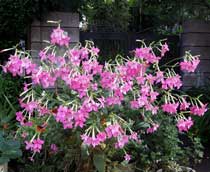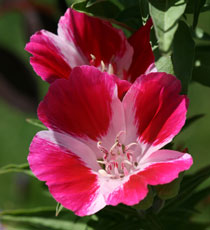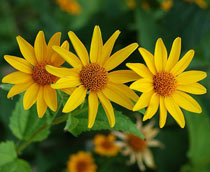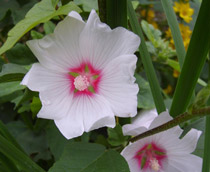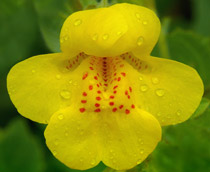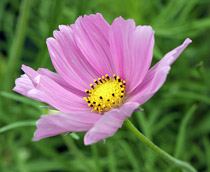
Annuals - Border Plants 2
If you don't know your Coreopsis from your Cosmos or your Godetia from your Nicotiana then help is at hand! This quiz will help you recognize and identify popular garden annuals and at the same time provide some pointers about how best to grow them.
After you have read and researched a little you should dive in and mix together the plants that you think will make a pleasing combination. Never worry about making mistakes with mixed plantings - if things don't work out ideally then do what every other gardener does and blame the freakish weather! Have fun.
- Although the plant is usually known as Pot Marigold it should not be confused with the Marigolds that are often used in mass bedding displays and belong to another genus.
- The plant is said to be a 'vulnerary agent' - it helps to heal and sooth wounds.
- Has a reputation of attracting beneficial insects (like ladybirds) and repelling harmful insects (like aphids).
- Sow seeds in the spring in the position where they are to flower.
- Sometimes called Marguerites.
- Often confused with single-flowered Chrysanthemums.
- Delicate foliage and sparkling white flowers make this a choice plant for a centrepiece.
- There are also yellow flowering varieties.
- It is sometimes trained as a 'standard' - ensure that no sideshoots develop near the base of the plant until the plant reaches the desired height.
- Requires full sun and free drainage.
- Available in a wide range of pinks, purples and whites
- For something different and interesting you might also try a green flowered variety!
- Looks sophisticated and also has a sweet smell in the evening.
- Fairly easy and cheap to grow from seed.
- Prefers full sun. It will flower in shade but the flower spikes tend to get leggy and fall over.
- Sometimes also known as Farewell to Spring.
- Almost always the flowers are a combination of pink (varying shades) and white.
- Flower stems are fairly strong and sturdy enough to be used as cut flowers.
- Like Zinnias, these plants do not like being transplanted so it is best to sow the seed in the soil where they will continue to grow.
- Sow onto a moist seedbed and do not cover.
- Coreopsis are related to Sunflowers but the size of a Coreopsis flower does not approach that of a Sunflower.
- It is the state flower of Florida in the USA.
- Most varieties are perennial but some will flower in their first year from seed.
- Grows best on sandy soil and to avoid flower stems that keel over make sure that it is not given an excess of nitrogen.
- The more sun you give it the more flowers it will produce!
- Grows rapidly and produces arching stems carrying the flowers.
- Don't be tempted to crowd them in with other plants - Lavatera should be allowed at least a square metre.
- Does very well in drought conditions and is particularly suited to sandy soils.
- Even plants sold as annuals might flower a second year (they are very hardy) so cut them back to about 30 cms from the ground in the autumn and see what happens the next spring!
- The plant genus contains about 180 species.
- Available in a wide range of colours - mainly pastel shades.
- Very easy to grow from seed.
- Flower size and shape as well as the height of the plant vary considerably. Read the seed packet to ensure that you get what you expect!
- For best results plant in full sun.
- Susceptible to attack by aphids so inspect the underside of the leaves frequently.
- Seed is small but it germinates quite readily.
- The plant should only be grown in situations where the soil in which it is growing can be kept moist. Some of its close relations are aquatic and bog plants.
- Grows best if it is shaded from the sun in the heat of the day.
- If growing from seed make sure that it is not planted out until after danger of frost has passed.
- In its native region Cosmos is a perennial but it is not hardy in the UK and therefore it is usually treated as an annual.
- Seed merchants list many different varieties that come in an assortment of colours and heights.
- Easy to grow from seed.
- The taller varieties may need some support to ensure that the flower stems stay upright. Either resign yourself to staking them or plant them in a mixed border with sturdier plants around them.
- The scientific name is Amaranthus Caudatus.
- Flowers can be either red or purple.
- Grows extremely quickly to form a low bush.
- Flowers in mid-summer and is much sought-after by flower arrangers at that time.
- In good rich loam the plant often produces long tassles of flowers that are so heavy that they need supporting to keep them clear of the soil.
Ready for more?
not all...
quizzers. Try to win a coveted spot on our Hall of Fame Page.







